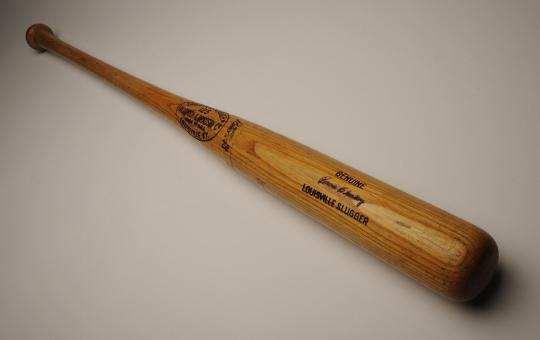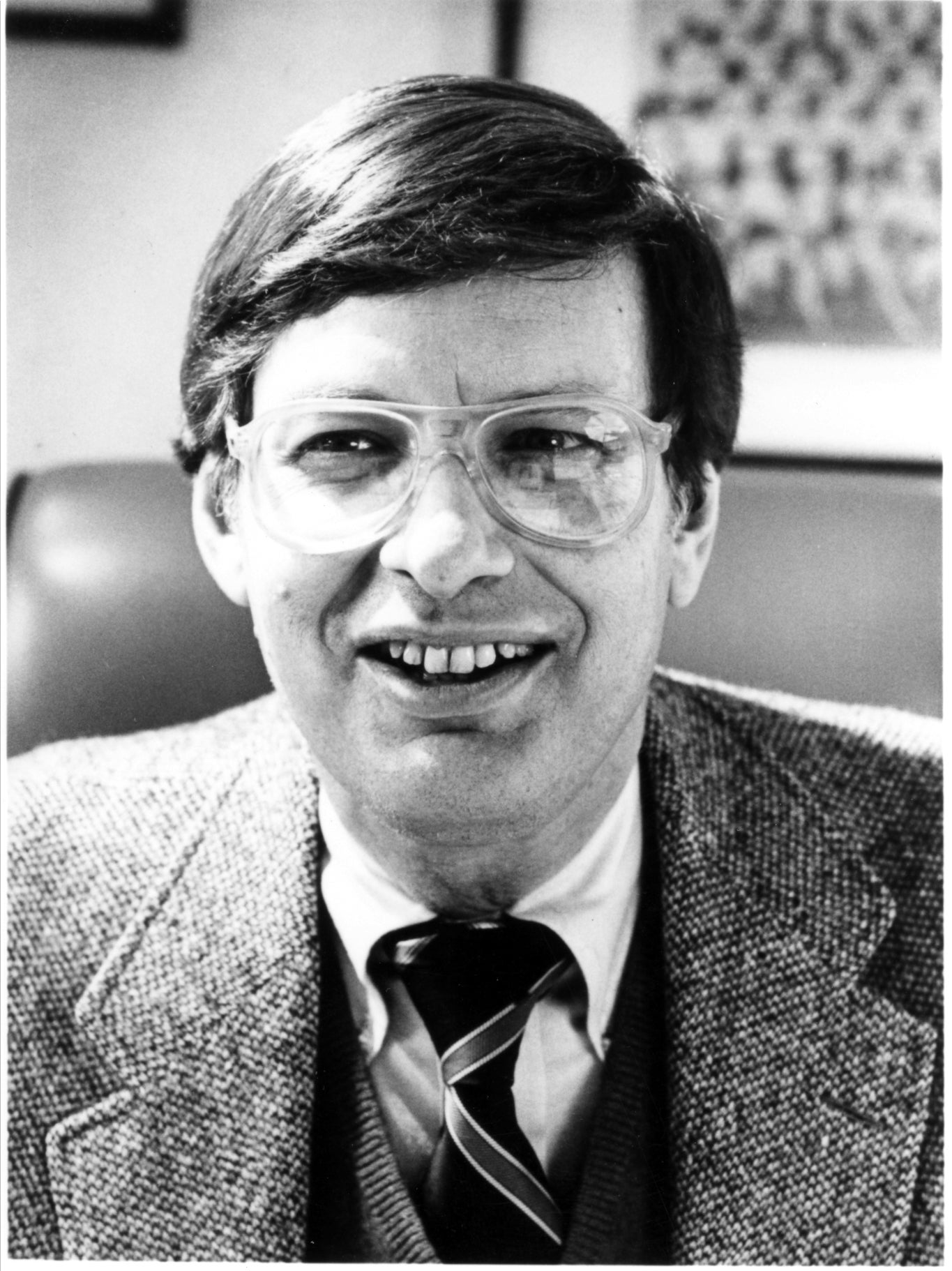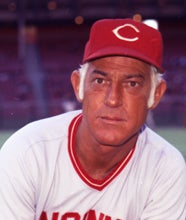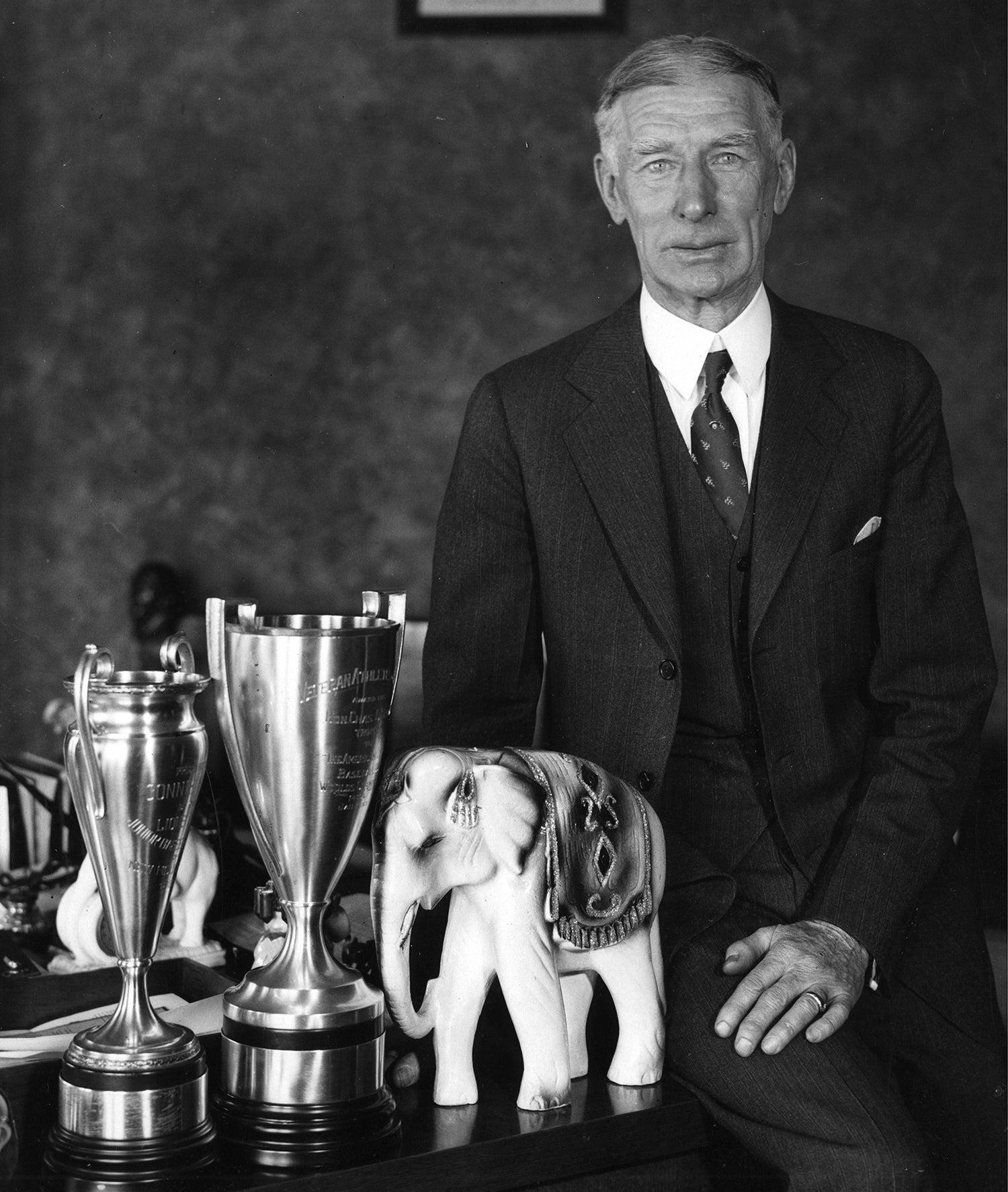- Home
- Our Stories
- The AL changed the game with a historic designation
The AL changed the game with a historic designation
If Charles O. Finley, the visionary insurance man who owned the Oakland A's from 1960 to 1980, had totally gotten his way, baseball would be using orange balls and rainbow painted bases.
That never happened. But one of Finley’s other pet projects – the designated hitter – is still around today and has forever altered the baseball landscape.
Official Hall of Fame Merchandise
Hall of Fame Members receive 10% off and FREE standard shipping on all Hall of Fame online store purchases.
Hall of Fame Membership
There is no simpler, and more essential, way to demonstrate your support than to sign on as a Museum Member.
Finley was convinced in the late 1960s and early 70s that a game suffering from shrinking offense needed to be enlivened, and – while not the only proponent of a designated hitter to replace the pitcher in a club's batting order – he finally received enough support to have the concept adopted in the American League.
What Hall of Famer Bud Selig, then in his fourth year as owner of the Milwaukee Brewers (who were then in the American League), called "the biggest rule change in the history of baseball to that point," became part of AL play in 1973.
The adopting of the designated hitter by the American League on Jan. 11, 1973, was as seismic a shift as had been felt in baseball since Jackie Robinson broke the color barrier in 1947.
But perhaps no one – not even Finley – could have anticipated the aftershocks still being felt from a fundamental change of the rules of the game.
"It was the only thing Charlie Finley ever suggested that I voted for," Selig said, looking back. "Both leagues were hurting for offense and the hope was that the National League would join us a few years later, but each of the leagues were pretty provincial at that time and now it's so ingrained that I doubt it will ever happen. But as (Philadelphia Phillies executive) Bill Giles likes to say, 'a little controversy isn't bad,' and it's helped keep a lot of popular players in uniform."
The controversy, of course, is multi-faceted, particularly in interleague and postseason games where American League teams lose their DH when playing in National League parks but NL teams get to add a DH in AL parks. Also, traditionalists argue that there is less strategy and fewer managerial moves with the DH because there is no need to pinch hit for a pitcher.
"It stinks," Sparky Anderson, then managing the AL’s Detroit Tigers, once said. "No one knows if I can manage or not."
Sparky had tongue in cheek since he had already established his Hall of Fame managerial credentials at the helm of Cincinnati's Big Red Machine and would lead teams to World Series titles in both leagues.
The history of the DH covers the history of baseball. There were discussions whether the pitcher should hit at the beginning of the 20th century, and future Hall of Famer Connie Mack, the famed owner-manager of the Philadelphia A's, was one of the leading supporters of a DH concept.
The big leagues took one major step to bolster offense after the 1968 season when the two leagues produced only six .300 hitters, the composite runs per game was only 3.41 in the AL and 3.43 in the NL, and Bob Gibson of the St. Louis Cardinals – en route to the Hall of Fame – produced one of the lowest earned-run averages (1.12) ever while Detroit's Denny McLain won 31 games. The mound was lowered and the strike zone raised, and Finley's push for a designated hitter became even louder.
As various minor leagues experimented with the DH, the American League finally adopted it by an 8-4 vote, having been outscored in 1972 by the same number of National League teams by 824 runs.
"Clearly, something had to be done. And personally I never got a thrill out of watching a pitcher hit,” future Hall of Famer Lee MacPhail, the New York Yankees general manager, said at the time.
On April 6, 1973, when Ron Blomberg of the Yankees became major league baseball's first DH (his bat is preserved at the National Baseball Hall of Fame and Museum) and drew a walk against Boston's Luis Tiant, Finley’s dream became a reality. That season, the American League's composite batting average jumped 20 points and the composite runs per game increased by almost a full run.
The AL has been the stronger of the two leagues in almost every offensive category in virtually every year since adopting the DH, but only once did the National League come close to adopting it as well – and seldom was it on the agenda again during the period when AL and NL owners met separately.
It happened at an owners meeting in 1977, according to Giles, the Phillies executive, and it would have probably been approved, he said, if there had been cell phones then.
Giles said he was instructed by Ruly Carpenter, the Phillies owner then, to vote in favor it because "we had a major league player in Greg Luzinski who would have been perfect in that role and a minor league player in Keith Moreland who was also a terrific young hitter but limited defensively."
The NL had 12 teams and needed seven votes to adopt it.
"Our big rivalry at the time was with the (Pittsburgh) Pirates," Giles said, "and Harding Peterson, their general manager, was under instructions from his owner, John Galbreath, to vote the same way we did. However, at the meeting, it was decided that we wouldn't go to the DH until a year later (1979), and since we were going to wait a year I felt that I should talk to Ruly before voting.
“Unfortunately, he was on a fishing trip and I had no way to reach him, and so my only choice was to abstain, and so did Harding. There were six teams in favor, four against, and our two abstentions. If we had been going to adopt the DH immediately without that year's wait it would have been approved, and it never came up for a vote again.
"We came close, but no regrets. The debate over the DH is healthy for the game."
Ross Newhan won 2000 J.G. Taylor Spink Award for meritorious contributions to baseball writing
Related Stories
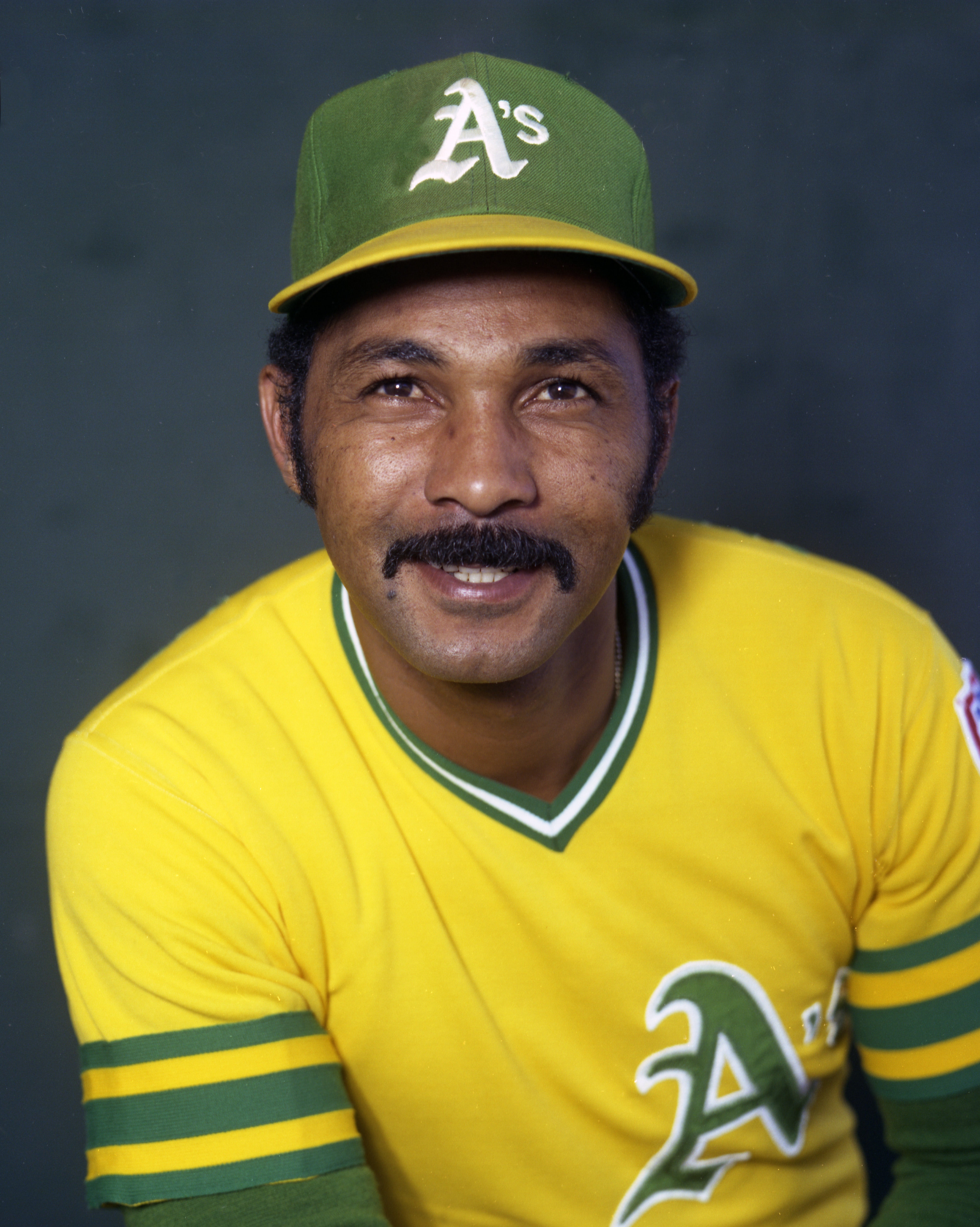
Cubs legend Billy Williams traded to Oakland
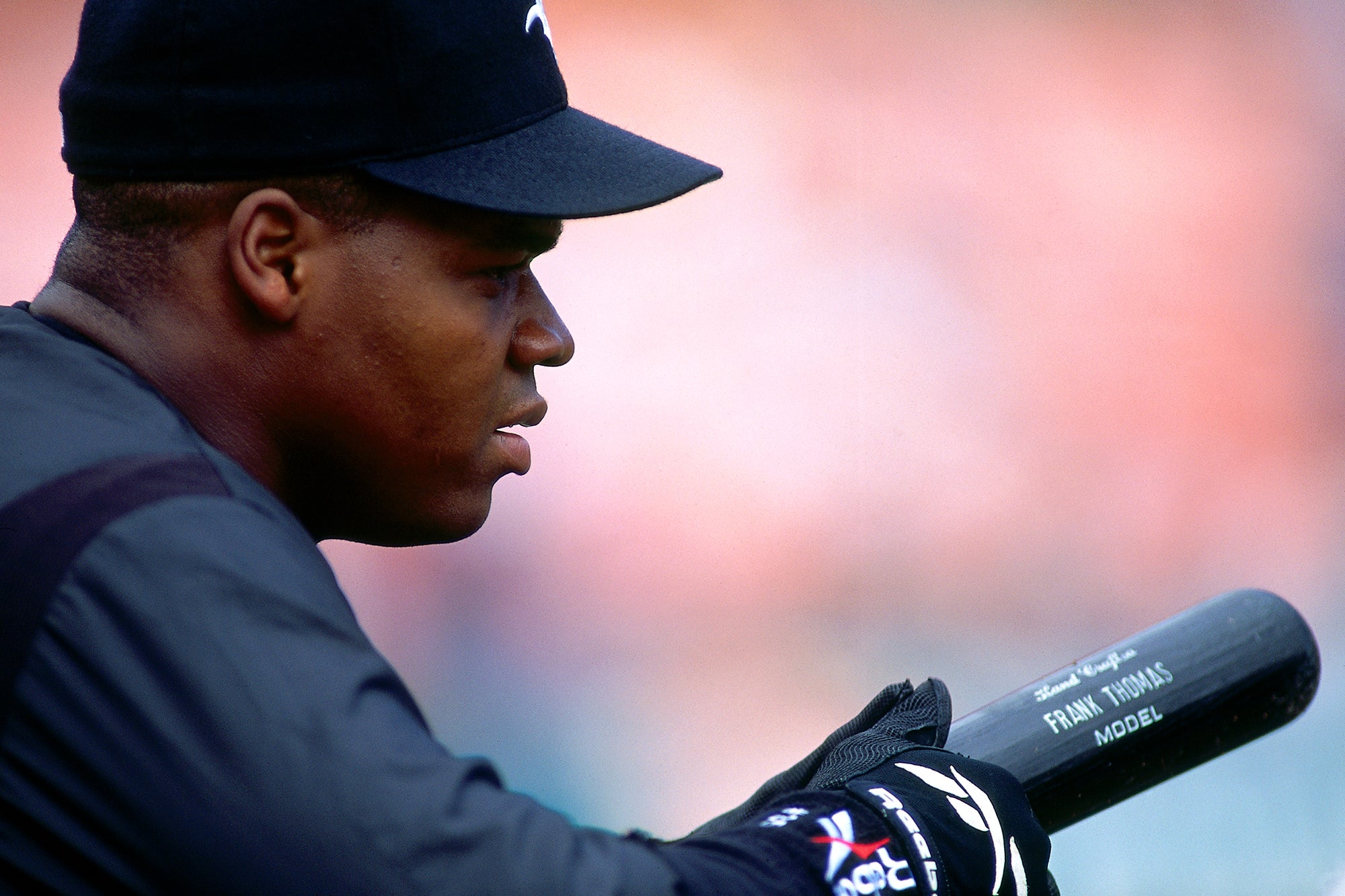
Vintage Frank Thomas returns after signing with Athletics

Martinez claims first place on Mariners’ all-time RBI list

Baines makes history in Orioles' win over Cuba

Cubs legend Billy Williams traded to Oakland

Vintage Frank Thomas returns after signing with Athletics

Martinez claims first place on Mariners’ all-time RBI list



